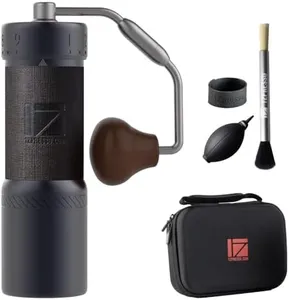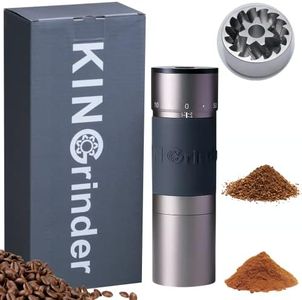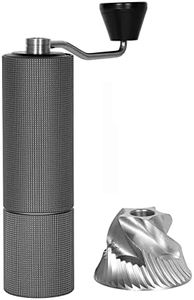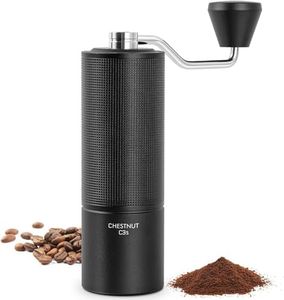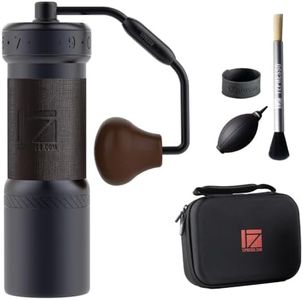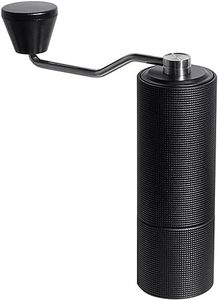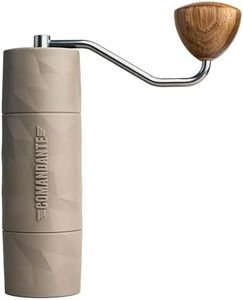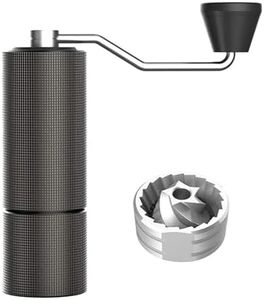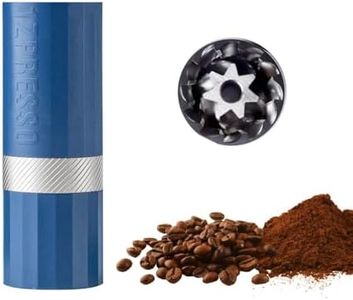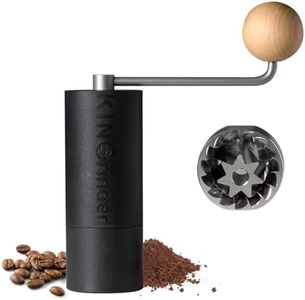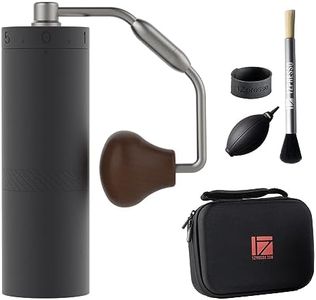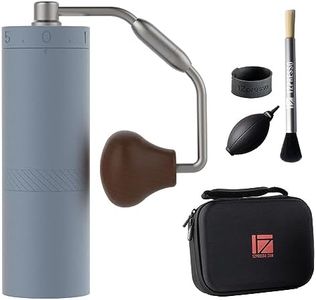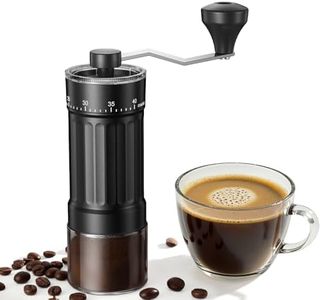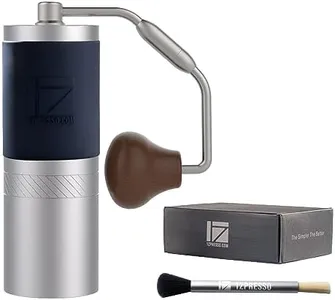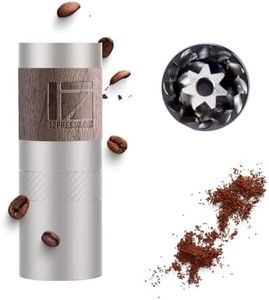We Use CookiesWe use cookies to enhance the security, performance,
functionality and for analytical and promotional activities. By continuing to browse this site you
are agreeing to our privacy policy
10 Best Manual Coffee Grinder
From leading brands and best sellers available on the web.Buying Guide for the Best Manual Coffee Grinder
Choosing a manual coffee grinder is an important step for anyone who wants to enjoy freshly ground coffee at home or on the go. A good grinder can significantly influence the flavor and quality of your coffee, providing better control over the grind size and freshness. When selecting a manual coffee grinder, it's helpful to understand the main features that affect usability, grind quality, and maintenance. By focusing on a few key specifications, you can find a grinder that's comfortable to use, delivers consistent results, and suits your brewing preferences.Burr TypeBurrs are the parts inside a grinder that crush the coffee beans, and they come in different shapes and materials, most commonly ceramic or steel. This spec is important because it affects grind consistency and durability. Ceramic burrs tend to last longer and stay sharper, offering good consistency without adding heat to the beans. Steel burrs are typically sharper at first and grind faster but may dull quicker. When making a choice, think about whether you prioritize long-term durability (ceramic) or faster and easier grinding (steel), as well as how often you'll use your grinder.
Grind AdjustmentGrind adjustment refers to how easily you can set your grinder to produce fine, medium, or coarse coffee grounds. This is crucial because different brewing methods require different grind sizes. Some grinders offer stepless adjustments, allowing for micro-tuning, while others have preset steps or clicks for specific sizes. If you plan to use several brewing methods (like espresso, pour-over, or French press), a grinder with precise and flexible adjustment will suit you best. If you only make one type of coffee, a simpler system might be sufficient.
CapacityCapacity tells you how many coffee beans a grinder can hold and process at once, usually measured in grams or number of cups per batch. This matters if you typically brew coffee for several people or just for yourself. Grinders with small capacity are lightweight and portable, ideal for travel or single servings, while larger capacity grinders are bulkier but more practical if you prepare coffee for a group. Match the capacity to your usual coffee routine to ensure convenience.
Build Quality and MaterialsBuild quality refers to how sturdy and reliable the grinder feels, which is influenced by the materials used, such as stainless steel, plastic, or glass. This is important because it affects longevity, ease of cleaning, and overall experience. A grinder made with mostly metal parts is usually more robust and durable, while those with plastic components may be lighter but less resistant to wear. If you need a grinder for travel, lightweight options might suit you, but for home use, investing in solid construction can offer better performance over time.
Size and PortabilityThe size and portability of a manual coffee grinder determine how easy it is to store, carry, and use, especially if you'd like to take it to work, camping, or traveling. Larger grinders are typically easier to hold and crank but take more space, while compact ones fit easily in bags but might be less comfortable for heavy use. Choose based on whether you prioritize portability or comfort and stability for home grinding.
Ease of CleaningEase of cleaning means how simple it is to take the grinder apart and remove leftover grounds and oils. This keeps your coffee tasting fresh and your grinder working well. Some grinders are designed with removable burrs and minimal parts, making cleaning quick and straightforward, while others require more effort. If you want effortless maintenance, look for a model with easy disassembly and minimal nooks where coffee can get stuck.
